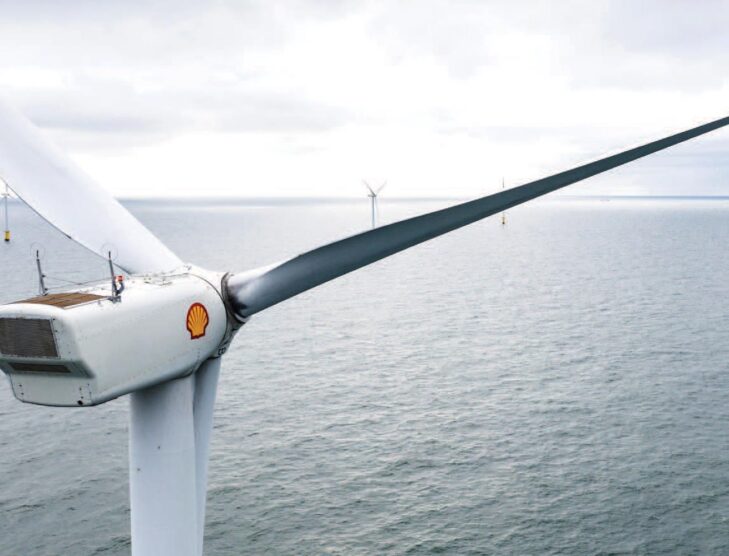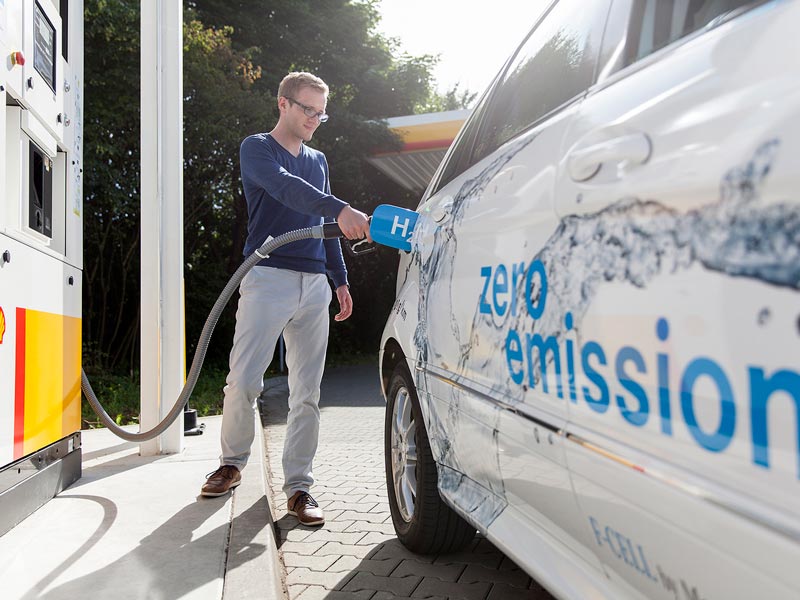
Shell reveals details of energy transition strategy
Anglo-Dutch multinational oil and gas company Shell says its energy emissions peaked at 1.7 gigatonnes in 2018. In 2020, the company’s carbon intensity declined 4% from the previous year to 75 grams of carbon dioxide equivalent per megajoule of energy (gCO2e/MJ). Lower demand for energy in a year ravaged by the Covid-19 health pandemic may have been a mitigating factor, however, carbon intensity in 2020 was down 5% on 2016, and Shell is making progress towards its stated goal to be a net-zero emissions energy business by 2050.
The energy transition is not without risk to the oil major. On 15 April 2021, Shell outlined the opportunities and threats with the release of its Energy Transition Strategy publication. The document is a key component of Shell’s Powering Progress Strategy that was issued on February 2021.

Shell’s energy transition strategy aligns the business with the more ambitious goal of the Paris Agreement—restraining the global temperature increase to a maximum of 1.5 degrees Celsius above pre-industrial levels. The strategy, updated every three years, should help profitably navigate Shell’s transition to a new energy company and includes operating plans, outlooks, and budgets with a 10-year forecast.
Achieving the aim of a1.5 °C temperature rise is challenging but technically possible, says Shell. The strategy document offers short-, medium- and long-term emissions targets to reduce the carbon intensity of the company’s energy products. Shell aims to reduce the carbon intensity of its products by 6-8% by 2023, 20% by 2030, 45% by 2035, and 100% by 2050.
Importantly, the targets include scope 1, 2, and 3 emissions—meaning Shell is taking responsibility for direct and indirect emissions—including those that occur in the company’s value chain. The paper also notes the danger associated with moving too far ahead of society, creating products that customers are unable or unwilling to purchase.
Perhaps most notably, the Anglo-Dutch company has tied its targets to the remuneration of its employees. From 2021, the weight of incentives for greenhouse gas emissions management will increase—which the company says will be influential in the annual bonus levels of employees and the executive team.

A first step in its energy transition strategy is adding more low-carbon products, such as biofuels and electricity, to the existing energy products it sells, says Shell. The company will look to simultaneously grow the supply and demand of low-carbon energy, eventually replacing many of the higher carbon products in its current day portfolio.
Six levers to decarbonise energy identified in the strategic document include the pursuit of operational efficiency in assets; a shift to natural gas; expanding its low-carbon power business; greater availability of low-carbon fuels—such as biofuels and hydrogen; carbon capture and storage; and the use of natural sinks.
Key milestones include the share of gas rising to 55% of hydrocarbon production by 2030. The company expects oil production to gradually decline by 1-2% per year to 2030, and no new frontier oil exploration will occur after 2025. Efforts to improve operational efficiency include the elimination of routine flaring by 2030. Shell will produce eight times more low-carbon fuels by 2030, increasing low-carbon fuel sales to more than 10% of transport fuels.
Other 2030 milestones include supplying more than 50 million households equivalent with renewable power and the establishment of 2.5 million electric vehicle (EV) charge points. Shell is targeting 25 million tonnes per annum (mtpa) carbon capture and storage (CCS) by 2035, and 120 mtpa of high-quality offsets using natural sinks.

A successful energy transition will require a fundamental change to its energy-related infrastructure and assets, says Shell. The strategy outlined a planned business structure to satisfy demand, including splitting the organisation into three business “pillars”— growth, transition, and upstream.
“Upstream” will focus on nine core positions with superior capabilities that generate more than 80% of upstream cash flow. Some positions will be divested or operated using a lean operating model that focuses on maximising cash generation. Cash from the upstream business will fund the company transformation and enable ongoing shareholder distributions, says Shell.
The “Transition” pillar will comprise integrated gas and Shell’s chemicals and products businesses—creating products that will enable the energy transition. Selective investments in competitive LNG assets aim to deliver more than 7 mtpa of new capacity by 2025. The strategy paper outlined Shell’s intention to reduce its refineries from 13 sites today to six high-value chemicals and energy parks. Production of traditional fuels will be reduced by about 55% by 2030, while Shell aims to grow its chemicals portfolio and boost cash generation in its chemicals business by USD1-2 billion a year.

Finally, Shell’s “Growth” pillar comprises its largest customer-facing businesses, including service stations, fuels for business customers, power, hydrogen, electric vehicle charging, CCS, and nature-based solutions. The Anglo-Dutch company plans to expand its retail sites from 46,000 to 55,000 by 2025 and increase daily customers by 33%—to 40 million—in the same time frame.
In an unprecedented move, Shell provided the opportunity for shareholders to voice their opinion on the energy transition. A non-binding advisory vote was held at the annual general meeting (AGM) on 18 May 2021. Shell claims it is the first energy company to submit its energy transition strategy to shareholders. It is “more important than ever for shareholders to understand and support our approach,” says Royal Dutch Shell CEO Ben van Beurden. Shareholders voted overwhelmingly in favour of the company’s energy transition strategy with 88.74% shareholder support.
During the AGM, activist group Follow This filed an additional resolution urging more “inspirational” greenhouse gas reduction targets. While the resolution was rejected, the motion attracted support from almost one-third of shareholders—despite pleas from Shell’s board to reject the resolution. A similar proposal at the previous AGM garnered only 14.4% support.
Shell may yet be forced to do more. While the oil giant is focused on decreasing the carbon intensity of its business; in a landmark case, a Dutch court has ruled that Shell must reduce its total carbon dioxide emissions by 45% by 2030, compared to 2019 levels. The ruling includes both its own carbon dioxide emissions and those of its suppliers. Though the May 2021 decision only applies to the Netherlands, it could have much wider implications. Shell has indicated they will appeal the “disappointing court decision.”







